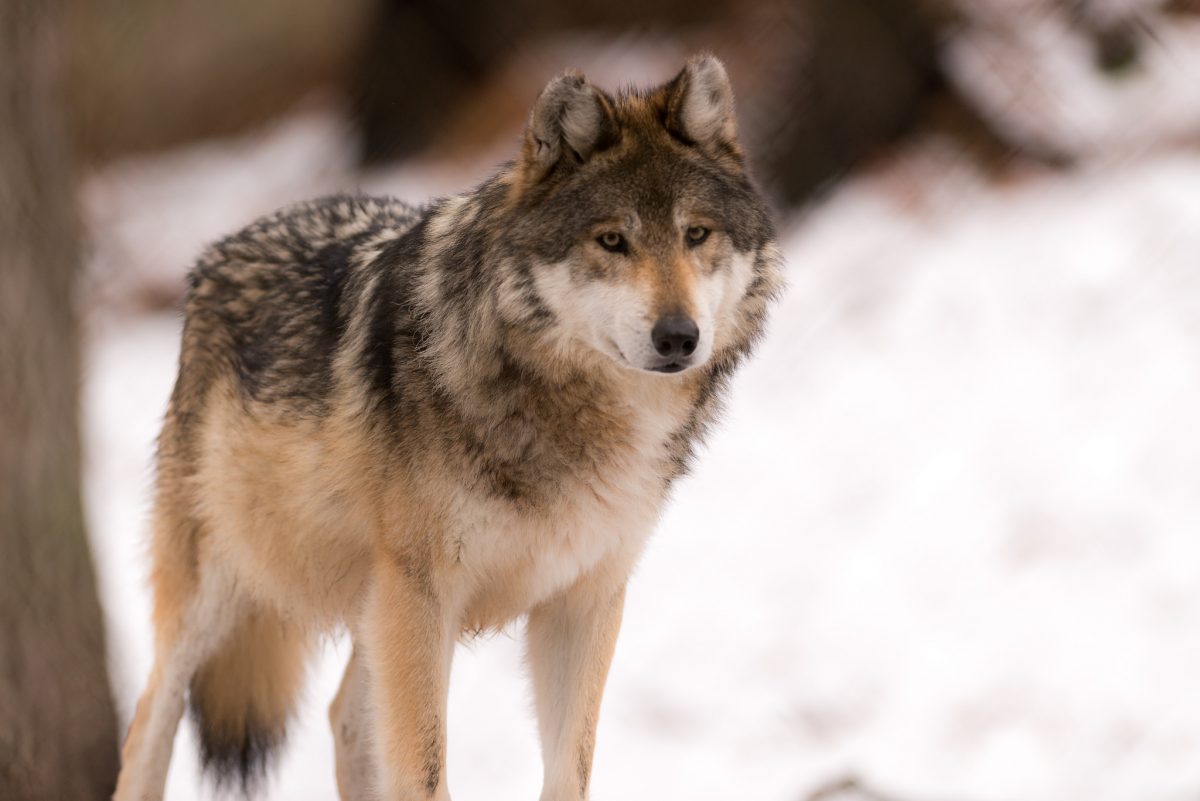Acting U.S. Secretary of Interior David Bernhardt caused a stir on March 6 when he preemptively announced the decision by the U.S. Fish and Wildlife Service (FWS) to remove the gray wolf from the endangered species list. Backlash against the decision has been swift, despite the fact that FWS has yet to make such a proposal official.
The effort to delist wolves, like grizzly bears, has been an unprecedentedly stormy one, with some environmental activists questioning the achievement of recovery goals and taking the matter to the courts.
Following the near eradication of the species in the United States by the early 1900s, the gray wolf was granted protections under the Endangered Species Act (ESA) in 1974, and FWS began working to once again grow a robust wolf population in the lower 48 states. Efforts have largely been concentrated in two regions: the Western Great Lakes (Minnesota, Michigan and Wisconsin) and the Northern Rockies (Idaho, Montana, Oregon, Washington and Wyoming); the species was reintroduced in Yellowstone National Park in the 1990s and has since expanded into neighboring states. (Alaska has a thriving population of gray wolves — between 7,000 and 12,000 — that are not protected by the ESA.)
“In terms of the number of wolves, they’ve far surpassed recovery goals, passed population goals in the state wildlife management plan.”
As of 2017, wolves in all of the states in the Northern Rockies region were delisted, and hunting is now used to manage these growing populations. Those in the Western Great Lakes were delisted in 2012, and management of the populations was handed over to the respective states, some of which allowed limited hunting and trapping. In 2014, however, a federal judge struck down the 2012 decision and reinstituted protections for the species in that region.
Now numbering around 3,800 in the Western Great Lakes and 1,800 in the Northern Rockies, the gray wolf appears to be thriving in those states — a consequence of which is that some farmers are experiencing issues with livestock depredation. In a 2018 interview with the Superior Telegram, Scott Wolter, large carnivore specialist with the Wisconsin Department of Natural Resources, said that more than one-third of all the wolves in Wisconsin live in Wolf Management Unit 1, which is also home to many livestock producers.
While a 2014 survey indicated that general support for wolf populations in Wisconsin was strong, it was lower in areas where wolves were known to range.
“The wolf population is very healthy and continuing to expand,” Wolter told the Superior Telegram. “In terms of the number of wolves, they’ve far surpassed recovery goals, passed population goals in the state wildlife management plan.”
Under the ESA, states and individuals are prohibited from using lethal means to prevent or mitigate depredation by wolves and are limited in what they can do to address the issue. Farmers’ options for warding off the animals include electric fences, guard dogs, alarms and strobe lights. However, as Wolter said, like a scarecrow in a garden, these “may lose impact over time.”
To compensate for [livestock depredation], Idaho issued $166,600 in federal reimbursements to livestock producers in 2018.
In Idaho, where gray wolf populations have also rebounded and the animal is no longer protected by the ESA, hunting and trapping are both legal. Yet, despite this fact, the species’ numbers have continued to increase, with approximately 1,000 animals in more than 90 distinct packs, according to the Idaho Governor’s Office of Species Conservation.
The state has also continued to experience a significant number of livestock depredations, with a record 83 in 2018, according to the U.S. Department of Agriculture’s Wildlife Services office. To compensate for these, Idaho issued $166,600 in federal reimbursements to livestock producers — a number that does not include those who opted not to file claims.
Lawmakers in favor of delisting the gray wolf stirred controversy in fall 2018 when they attempted to sidestep FWS by introducing a bill aimed at removing the species from the endangered species list. The measure passed 196-180 in the House of Representatives, with nine Democrats voting with the Republican majority; 12 members of the GOP voted against the bill. Ultimately, the legislation died in the Senate.
With approval for delisting the species high among livestock producers and support for maintaining protections strong among those outside of the farming community, it’s unlikely any effort to remove ESA protections for the gray wolf in 2019 will be any less contentious than in the past.





